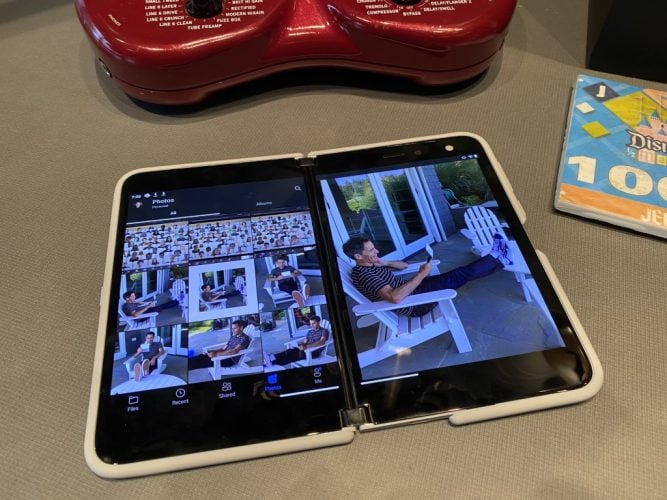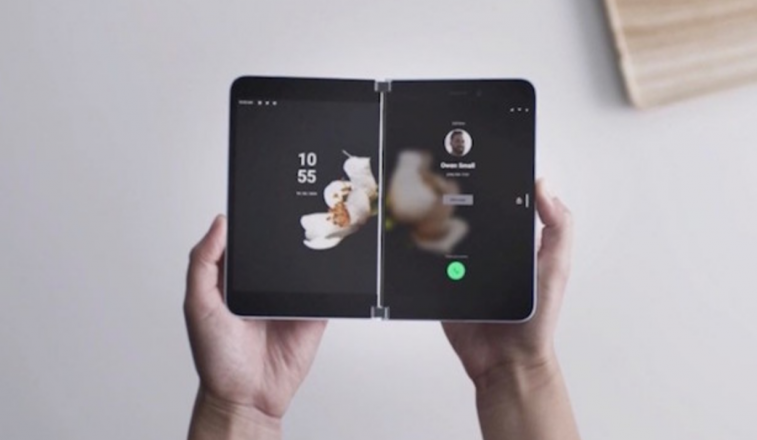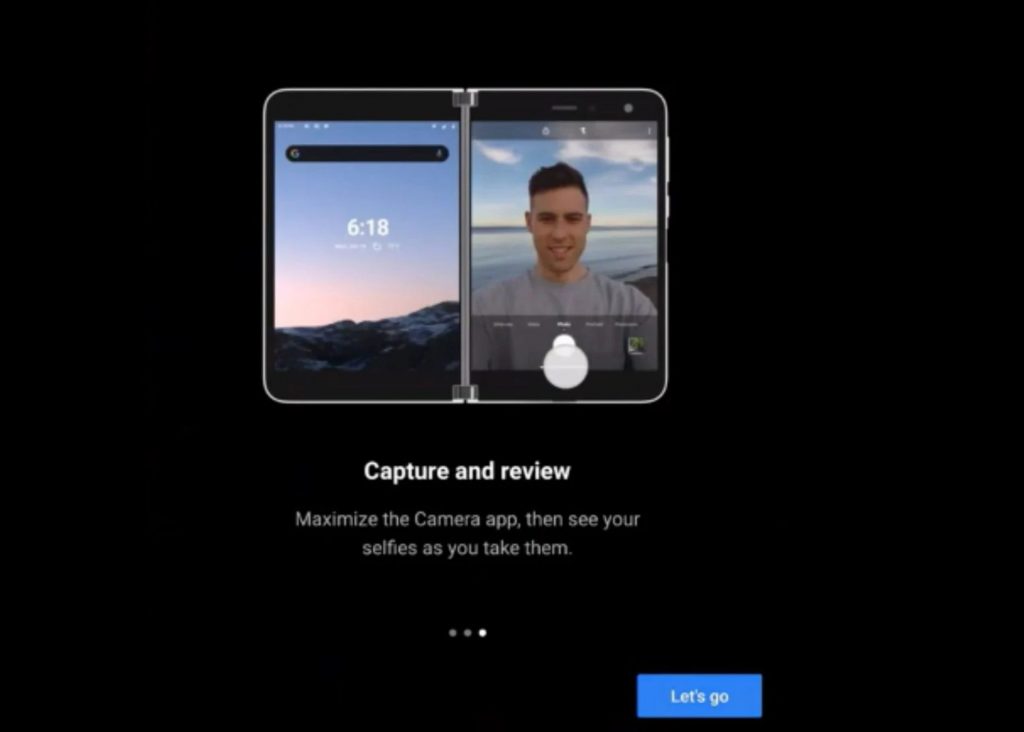Here’s everything we know about the Surface Duo Camera
6 min. read
Published on
Read our disclosure page to find out how can you help Windows Report sustain the editorial team Read more

Pre-orders for the Surface Duo will begin arriving on September 10, and 50 lucky press members already have review units in their hands. However, one thing that a lot of prospective buyers are concerned about is the Surface Duo’s camera.
Since the Duo isn’t exactly your typical phone (Microsoft doesn’t officially call it one,) there’s a lot about the camera that is quite different. For instance, you’ll find that there’s no rear camera onboard. Taking photos will require some flipping and moving of the two screens.
Microsoft’s official specs sheets have mentioned the megapixels and the sensors inside the camera, but asides from that, it still remains very much of a mystery. We’ve done some digging, though, and here’s a look at everything we currently know about the Surface Duo camera.
The camera itself
As we just said, there’s just a single camera lens on the Surface Duo. It is housed in the right corner above the right display. Specs-wise, Microsoft says that the camera lens comes in at 11 megapixels, with a 2.0 aperture, and a 1.0 µm sensor. There’s also a High CRI LED Flash next to that camera, too. And, the Duo’s camera has an 84-degree diagonal field of view. (By the way, for those unfamiliar with photography, µm refers to the size of the individual pixels.)
With those specs, the Duo’s camera is a bit different from what you’re likely used to in a 2020 phone. You won’t be getting a fancy dual, triple, or four camera lens set up as you would with on a similar $1,400 phone like the Galaxy Note 20, but that may not be a bad thing.
The reason why? Many have dubbed the main camera on the Pixel 3XL as the best on a smartphone. It shares a main camera setup just like the Duo, and at the time when most phone makers were going for dual cameras, it did what the Duo is doing now — a single camera setup.
The Pixel has a single 12-megapixel camera sensor, a 1.8 aperture, and 1.4µm. Up against the Duo, It has the upper hand in MP and µm, that’s for sure, but since they’re so close in specs, we’re hoping that the Duo’s image quality will come close to the Pixel’s. That’s in a bright light situation, at least and we will have to wait for our full review to find out.
Again, just keep in mind, there’s no multi-camera setup on the Duo, and if you want to use the camera for things other than selfies, you’ll have to flip the display around. Of course, you could carry the Duo with the screens folded outwards in your pocket, and have a rear-facing camera with the software controls on the screen facing you at the ready.
Still, the camera is also using PDAF technology for focusing on images. That’s a bit different from modern smartphones which feature laser autofocus. Laser autofocus is preferred, and we believe that the Duo might not perform well in low-light scenarios for this reason. Time will tell, however.
The software
Next up, there’s the software inside the Duo that powers the camera. There are a couple of routine software features built into the Surface Duo camera. Most of the controls will be available by swiping at the bottom of the camera UI when the screen is folded over. We’ve listed them all for you below, and remind you that our previous post has a bit more info about how the Duo’s software looks.
- Auto mode with low-light & HDR multi-frame photo capture and dynamic range scene detection
- Super resolution zoom, and super zoom up to 7x
- Portrait mode with adjustable depth control
- Panorama mode
- Burst mode
- Slow motion mode
- 4K video recording at 30 fps and 60 fps
- 1080p video recording at 30 fps and 60 fps
- HEVC and H.264 video recording formats
- Gyro-based digital video stabilization
Indeed, from that list, there’s not much special about the features of the Duo’s camera. However, much like Google has done with the portrait mode on the Pixel 3XL Camera, Microsoft is using Artificial Intelligence on the Duo. Officially, the company says that this means it will be optimized for different shooting situations and scene detection. We’re looking forward to testing that out.
The image quality
Moving to the end, there’s image quality. Since reviewers have an embargo on their units until September 10th (launch day), there aren’t many official photos posted from the Surface Duo. We’ve seen Microsoft executives like Panos Panay and Vishnu Nath send out images from the Duo, however, but all have been posted to Instagram and have been compressed.
In Pano’s original photo (the first known one posted from a Duo,) things looked a bit compressed and out of focus. However, in a more recent bright-light photo posted by Microsoft PM Vishnu Nath, we could see that the Duo takes awesome photos in daylight. The colors really pop, and there’s a lot of good contrast. We included his image above.
Asides from those two images, it’s a guessing game when it comes to image quality. However, Microsoft Bytes on Twitter has an interesting proposal. The user suggests that The Surface Pro X uses a 10MP AF f/2 lens, so that image quality might be the same as what you get with the Duo.
Surface Pro X (ballpark Surface Duo) samples (Set 1) pic.twitter.com/llsSL1GWsi
— Microsoft Bytes (@msftbytes) August 16, 2020
Of course, take that with a fine grain of salt, but his results are quite interesting. Compared to photos taken on his iPhone X, the photos from the Pro X do appear very good in lighting conditions, but the iPhone is much less washed out and does better in lighting. We hope that the Duo’s camera performs much better, but the comparison is interesting, to say the least.
What do you think?
As the Duo’s camera is one of the most important things many are considering, we’ll be keeping an eye on it for you. Ahead of the arrival of our own Surface Duo, we’ll also be hoping to demo a Duo at a BestBuy with it becomes available in stores for display on August 28. We’ll keep this article updated throughout the next few weeks as reviews appear, and as we learn more about the Duo. Keep tuned, and let us know your thoughts in the comments below.











